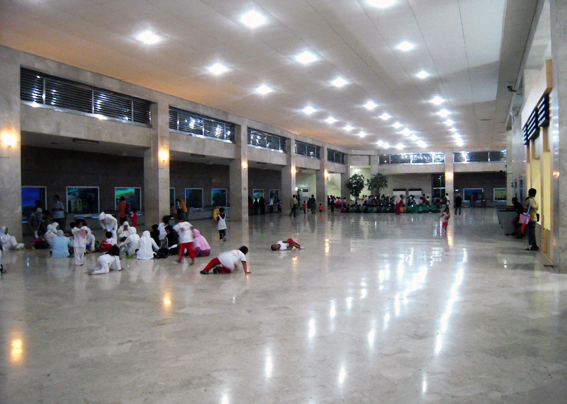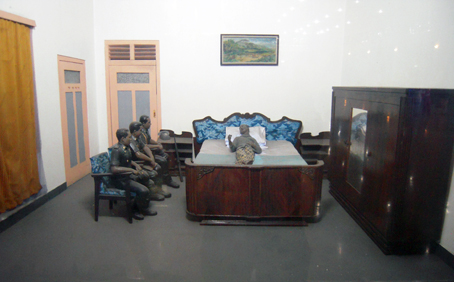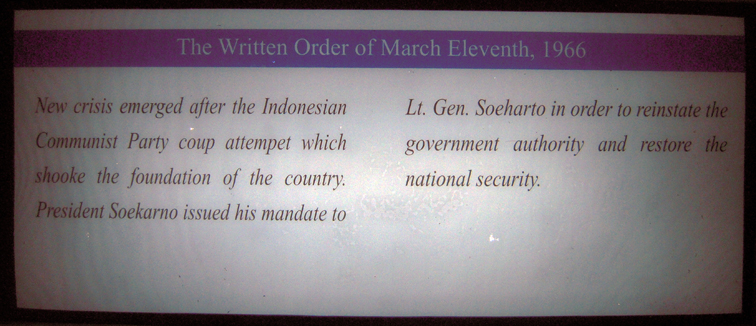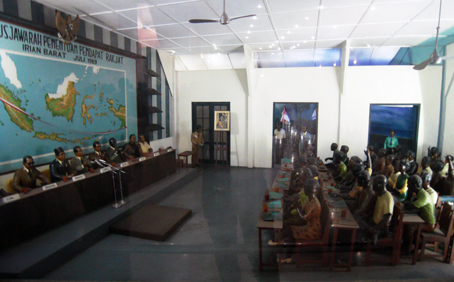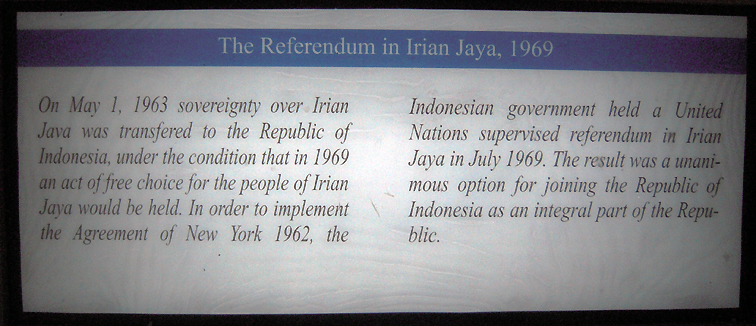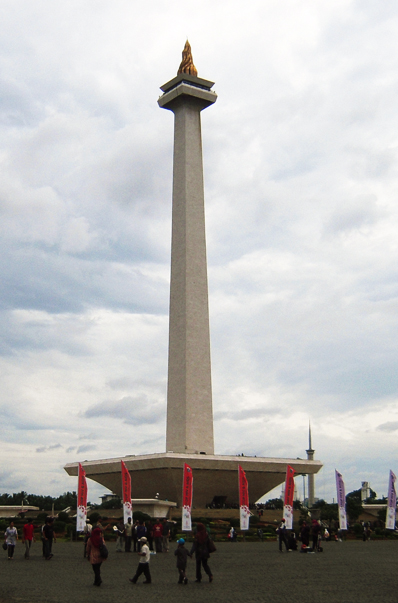Underneath the MONAS tower there is a huge hall called the National History Museum. It’s very much of its time, all shining marble and bright lights. On the day I visited, there were dozens of colour-coded groups of children there – green, pink and white – their voices ricocheting off the hard surfaces. It could be a train station. Or Canberra.
Around the walls of the hall are a series of dioramas recreating significant moments in Indonesia’s history. The scenes they portray go back to the earliest days of human settlement in the region and the rise and fall of competing kingdoms, as well as the region’s many interactions with foreign powers such as the arrival of the Portuguese and the Japanese occupation.
I liked the dioramas a lot. Two in particular caught my eye because they relate to recent events in Indonesia’s history and demonstrate how national narratives are presented and framed. I’m not an expert on Indonesian history; in fact I know next to nothing about it, and yet even I can recognise how the events as portrayed in these dioramas are highly contentious representations (they are also difficult to photograph because of the reflections but hopefully the sense of them is conveyed).
The first shows Sukarno handing over power to Suharto’s generals in the wake of the 1965-66 purge against the Communist party during which hundreds of thousands, perhaps millions, of Communist sympathisers were executed and imprisoned. The caption beneath the diorama reads:
New crisis emerged after the Indonesian Communist Party coup attempet (sic) which shooke (sic) the foundation of the country. President Soekarno issued his mandate to Lt. Gen. Soeharto in order to reinstate the government authority and restore the national security.
Given what was happening at the time, the sense of understatement here is breathtaking; sometimes even the briefest sentences can speak volumes.
The diorama is a curious scene too, the spartan bedroom with its heavy teak furniture and Sukarno lying as if on his deathbed (he died in 1970) passing on his final wishes to the attentive generals. The exact circumstances of the signing of the Presidential decree are uncertain with some accounts claiming that Sukarno was forced to sign it at gunpoint.
The second one purports to show the people of West Papua voting to join Indonesia at a referendum held in 1969. The Indonesians are seated on a raised dais beneath a map of the Indonesian territories while, in front of them, the West Papuans, seated like children in a classroom, vote “unanimously” to become Irian Jaya.
Again, the circumstances of the referendum are highly contentious and, as with the events of the anti-Communist purge in the sixties, the effects continue to simmer and occasionally boil over; even while I was in Jakarta, a Morning Star flag-raising ceremony in the regional capital of Timika, marking 50 years since the flag was first flown in 1961, resulted in the Indonesian authorities dispersing the crowd with gunfire.
History is a messy business, transitory and contestable, and even attempts by those in power to designate a specific, sanctioned version often merely serve to draw attention to what is omitted, the booming silences in the gaps between what is written and shown. There’s something almost poignant about these static displays – as with the reliefs outside or the monument itself – that seek to freeze history at a certain point in time even as the rest of the world continues to surge past all around.
